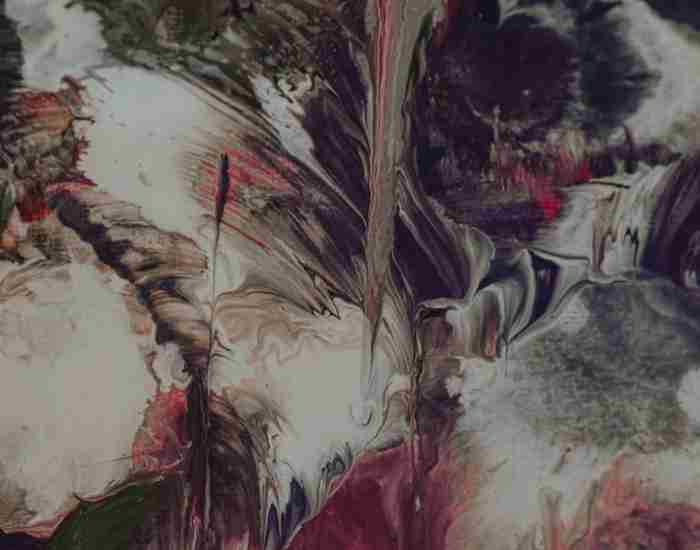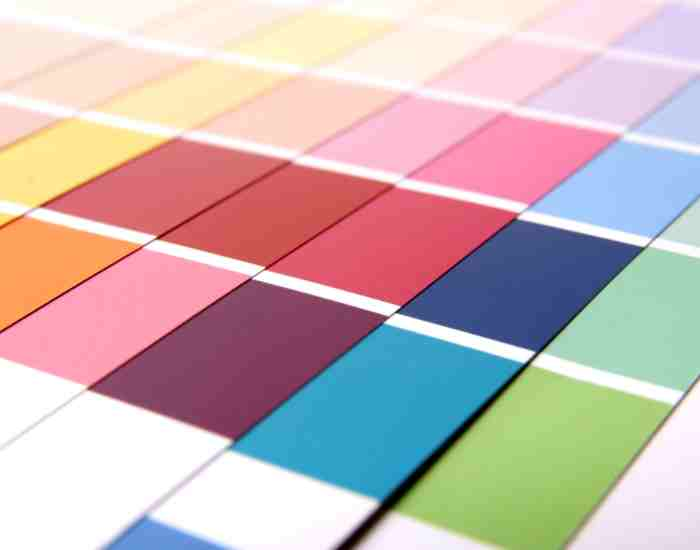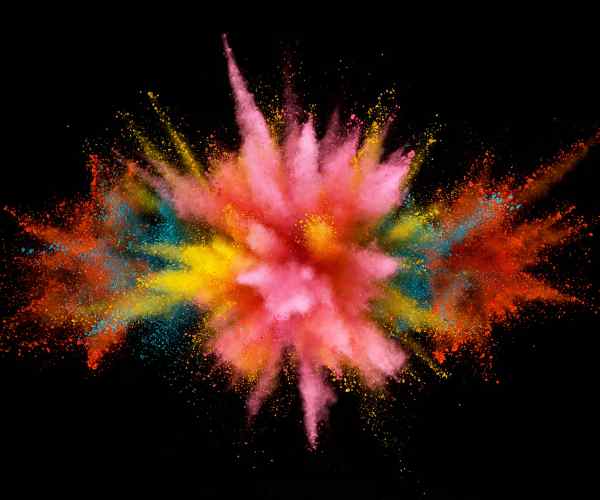Is using acrylic paints and getting that perfect brown tone your biggest obstacle?
A brown shade is a very important tone since it helps enhance depth and warmth when creating a piece. It doesn’t matter whether you are painting a landscape or a portrait, an artwork that lacks brown feels incomplete. Despite brown being an essential tone, mixing different colors to make it can be hard. Understanding its theory and how to mix colors will be essential.
This guide focuses on getting that perfect brown by mixing different acrylic shades. But wait there’s more, we will also show you a perfect guide that includes various methods, tips and tricks to help you perfect the perfect shade of brown! This guide is targeted towards both amateurs and pros. By the end of this article, your perception regarding color mixing will be changed forever.

Color Theory
Color theory is crucial in grasping how colors relate and how they mix in creating new tones. It is very important when mixing brown. Let us start from the very basics and see how they relate when it comes to mixing the color brown using acrylic paints.
The color theory is divided into primary, secondary and tertiary colors. The primary colors red, blue, and yellow are the three purest colors and cannot be created from other colors. Secondary colors are created by combining primary colors; therefore, when red and yellow are mixed, we get orange; blue and yellow are combined to yield green; and red and blue create purple. Then we have tertiary colors, which are a mixture of secondary and primary colors.
When mixing brown shades, the two primary shades that are very important are dark brown and light brown. For instance, when dark brown is mixed with yellow shade light brown results. Conversely, when warm and earthy light brown shades are mixed, the result is dark brown.
Here are some examples of how different combinations of primary colors yield varying brown hues: Red +Yellow yields a warm golden brown.
Blue together with yellow yields a cooler and earthier tone of brown. Red combined with blue on the other hand yields a cooler and richer tone of brown.
The two colors, when combined, yield a neutral color most often brown or even gray: these two are known as the complementary colors. Complementary colors are equidistant from the color wheel, for example, orange would be across blue. Therefore, while mixing colors, even a neutral brown color can be mixed using two other complementary colors.
This means that different shades of brown can be created while combining a pair of complementary color: orange and blue or even red and green. This in turn would allow the artist complete control to alter the hue to exactly what they want.
Mixing Techniques
Mixing techniques are important in achieving the relevant hue and shade of brown during an acrylic painting. So let’s look at some tips and tricks to effectively mix various shades of brown.
Gradual Mixing Method
The method of gradually mixing a color into brown is an elementary technique of mixing brown. This technique involves adding small portions of color until a brown of required shade is achieved. Here is how it goes:
Base Must Be Chosen: Depending on the required undertone red blue or yellow can be painted as the bottom layer.
- Add Slowly: Carefully take portions of the base color and mix it in such that only small portions will be added. Usually in this case the base is complementary or one of the primary colors. Continue mixing and adding more colors until the required shade of brown is achieved.
- Control Degree: The ratio of the brown added and the new color to be painted can help regulate the saturation and intensity of the brown that results. If more of the base color is added to the brown a more vivid color of brown will be obtained. Conversely if less is added in the beginning a lighter shade of brown will set in.
Here are some suggestions for controlling intensity and saturations that work best:
- Use lesser parts: It always works best to gradually add colorful portions only after darkening a brown that become too dark. It is most reasonable to add a small portion of color and then increasing it at a gradual pace.
- Mixing Panel: Always remember to have a clean mixing panel or surface to mix colors on. It allows you to appreciate the color changes better and mix contrary colors in just enough amounts.
- Test Swatches: It is important to regularly check to see what your brown mixture looks like when the mixture is applied on a different surface, and make changes where required – This helps avoid overmixing and ensures consistency.
Pre-Mixing Approach
Another useful way to mix brown is the pre-mixing approach, in this technique different colors are mixed first before the brown mixture is formed. Here is how it works:
- Preparation: Decide what colors you are going to use to come up with your brown shade. This may consist of primary colors, secondary colors or complementary colors.
- Mix Colors Separately: Take each color you plan to mix into your brown mixture and mix them up in separate jars to obtain the desired level of hue and lightness.
- Combine Gradually: After preparation of the color mixtures, combine them evenly or in ratios which you deem fit into your brown shade gradually.
Advantages of the pre-mixing approach:
- Thickness: When colors are mixed separately this ensures thickness of your mixture which renders more reliability and uniformity.
- Control: This method gives more power in deciding what the brown final shade is, since each color is combined individually the color saturation can be controlled.
- Efficiency: It may take a little longer in the beginning to color mix but the pre-mixing style will save time when it comes to painting. This is because you will have a brown mixture that’s ready for use at that moment.
Exploring brown variations
Brown is one thotgh has its own variety and each has its own emotion or aesthetic. Instead, we will focus on different shades of brown and how one can get these by mixing some paints using acrylics.
Warm browns vs. cool browns
Brown is both warm, brown and light brown. However, they do not look the same and do not feel the same while looking at them. Knowing what the difference is between the two can make a big difference in how well you can help portray what you are trying to paint including the atmosphere you want.
- Warm Browns: They have undercurrents of red or yellow, which is why warm brown tones have rum pleur. And such tones are frequently associated with nature and warmer interiors.
- Cool Browns: Tones of cool brown have hints of blue or grey which is where they get their hue. And these shades are frequently seen in minimalistic art pieces or in landscapes when the artist wants to add depth.
Great to hear that you’re interested in learning how to paint brown hues. In this article, we will highlight key aspects related to browns and its shades.
Key things to remember when working with shades of brown:
If you’d like to paint warm brown shades, try combining primary colors like red, yellow, and orange with brown paint or burnt sienna. Or you could play around with different mixtures of these colors in order to find the most perfect blend.
For cool brown tones, mix blue, green, and purple with brown or black paint. Change the ratios of the colors until you achieve the coolness you envisioned.
Examples of color combinations include:
Warm Brown: Red + Yellow
Cool Brown: Blue + Brown
Adding Depth with Darker Shades
If you want to create real drama in your artwork, use darker shades of brown and mix them with black paint as they create depth, which will draw attention to the painting. If you don’t have black paint available, all is not lost! You can still darken brown by using complementary colors which are the opposite shades on the color wheel.
How to make brown darker: Absolutely white! In order to create various shades of brown, seek to use various combinations of burnt sienna and white paint.
As an instance, blue or purple can be included in a warm brown to darken it. This will also create a rich and full color. Just as what black paint does, it can darken brown tones and create shadow with Wow effect.
Examples of Usgeful Painting Sceneries:
Utilizing shades of dark brown to show shadows and contrast in nature, still life, and portraits.
To intensify the visual effects in enhancement of architectural designs or to textured surfaces dark brown shades and deeper tones are used in borders and depth areas.
Tips & tricks
Developing your brown mixing skills can be a two-step affair – practice and understanding. Let us look at a few practical tips and tricks to help you minmixing of brown color and you will find it with acrylic paints.
Experimentation and observation
Brown mixing is a craft which I can say is best achieved through experimentation. Be creative and try out as many shade variations as you wish regardless of whether they make sense at the time. Here are some tips to guide your experimentation:
Begin with Small amounts: Begin with small amounts of brown to prevent wastage of the paint and improve color control. You will achieve that wick color gradually adding it into the mixture until the right shade is reached.
Don’t be afraid to mix! Many brown mixing guides exist, but they limit your imagination. If you want to mess around with unexpected color combinations, go right ahead, the outcome might surprise you.
Watch closely: Take note of the changes that happen whilst you are mixing colors, observe how they interact with one another. It’s remarkable how a slight amount of one color can cover the other, shaping a completely new kind of brown. This type of observation will only enhance your skills over time.
Using a Mixing Chart
A mixing chart is quite useful in keeping detailed records of the colors used in the past and the ration in which they were mixed. A mixing chart can help improve your brown mixing skills in the following ways.
- Make a chart: Grab a piece of paper or canvas and divide it into parts. Each part is going to hold a record of a varying ratio in derived color or even mixing color.
- Record Mixtures: Use your mixing chart to document which colors you used, and how much of each (in ratio) you mixed, experimenting with different shades of brown. Later on these records will allow for the same shades to be formulated in the future.
- Reference Guide: Consider your mix chart as a painting guide. If you need a precise color combination, aim for your mixing-chart. If you want to try out shades above your limit, look at your mixing-chart for inspiration.
- Update Regularly: I like to create fresh color mixes and mixing techniques, thus I update my mixing chart. This ensures that my chart will remain useful during my future painting endeavors.
FAQs
In this section, we have compiled some additional questions and answers that will help you in the process of mixing brown with acrylic paints.
What are some common mistakes to avoid when mixing brown?
Preventing brown from forming can be accomplished by being mindful of some of the common errors. Below are some of the common hazards to avoid when mixing shades of brown.
- Using too much black: Including black paint on your palette can actually help mute your brown shades, but it’s important to keep in mind that too much can lead your brown shades to appear flat and dull. So instead, consider using other neutral colors alongside with sparingly black paint for your desired brown shades.
- Not considering color temperature: The influence of color temperature on one’s desire will be ignored, and as a result, the brown shades will turn out to be awkward and unbalanced. It is crucial to note whether a warm brown shade or a cool one is needed, and this eases the problem of mixing colors.
- Failing to blend a little at a time: Knowing how to combine colors is the key to ensuring that your brown blends in perfectly with your craft. It would therefore be ill advised to rush this stage as it may cause all your hard work to go in vain. When adding top coats gradually, observe how each coat impacts the colors until the desired outcome is achieved.
What do I need to add in order to mix brown?
It is possible to mix the brown color using three primary colors, but doing so would lessen the darkness of the brown color, which is a bit unnatural. It is advisable to use orange, yellow, or green as secondary colors, since they contribute greatly to producing the perfect brown shade. Note that hues such as bronze, tan, and even beige are lighter forms of the brown color.
How do I make a lighter brown color?
To make brown less darker, use the method of adding a small amount of white paint to the darker hue to achieve the perfect brightness. It is wise not to add a great deal of white in one go, or the color will become pale and lifeless. Instead, gradually increase the levels of the color to one which is more suitable for you. Additionally, to achieve an even lighter brown paint, consider combining it with other hues such as cream or yellow.
Summary
To sum up, mixing brown with acrylic paint skills is something that every artist should try to learn. We have touched various aspects and tried to introduce some techniques which every artist needs to mix the desired shade of brown for their projects.
The first step was to elaborate on the role of color interaction and color blend in shading. It was suggested that soliding grasp the concepts of primary, secondary, and complementary colors for diverse mixing of brown.
The second part focused on the problem of brown mixing spacing factors such as the gradual mixing of brown, how to mix the color as well as the gradual mixing of brown. It was suggested that one should keep an open mind while trying out new shades of brown along with a mixing chart. This will also help in developing more brown shades that fit the requirements in the future.
Finally, different shades of browns such as warm browns and cool browns as well as using dark shades to create an illusion of depth within browns were discussed. Trinity of brown was also described where each color stimulates the viewer’s eye in a different way.
- More Post: 5 Best 11 x 17 Printers
- More Posts: How to Make a Pastel Color Palette with Hex Codes






